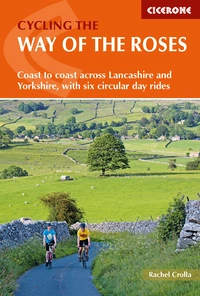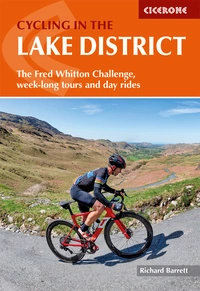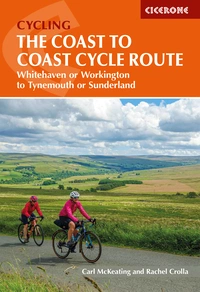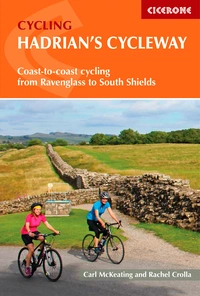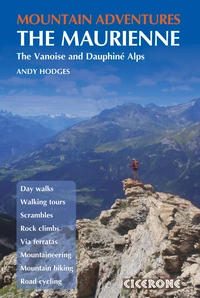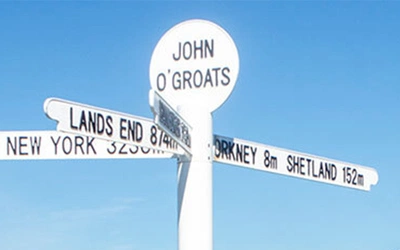Cycling the Way of the Roses: essential facts and top tips
The Way of the Roses is the perfect route for cyclists of all abilities. It's an ideal way to see the beauty of the North of England, visit Morecambe, York, the Dales and Bridlington from the saddle of your bike. Read on to discover key information about the route.
The Way of the Roses will appeal to just about everyone who loves cycling. The route is a 170-mile (274km) coast-to-coast ride that opened in 2010. It was designed to link the historic Red and White Rose counties of Lancashire and Yorkshire using scenic country lanes, minor roads and traffic-free cycle paths to create a superb ride between the seaside resort towns of Morecambe in the west and Bridlington in the east.
The route lends itself to making pitstops in idyllic villages and replenishing calories in riverside tearooms. Added to that is an impressive array of castles, cathedrals, abbeys and prehistoric sites, along with stunning natural features such as the Three Peaks, Brimham Rocks and Flamborough Head; but the star attraction always remains the cycling itself.

How difficult is the Way of the Roses?
Cycling the Way of the Roses is a challenge within the reach of cyclists of all abilities. Cycling the Way of the Roses can be approached as either a holiday or a challenge (or a bit of both). Average cyclists on average bikes will find it both achievable and enjoyable.
Which direction should you cycle the route?
Although it is described from Morecambe to Bridlington in the main part of our guidebook, the Way of the Roses is perfectly feasible in the opposite direction. However, there are a handful of spots where the signs for cyclists travelling from Bridlington to Morecambe are missing or not as clear as the ones for the standard direction. So, on balance, the Way of the Roses is a more enjoyable outing done from west to east. Starting from Morecambe, the flatter and lengthier third section can be done with tired legs on the third day.
Is the Way of the Roses easy to follow?
The route is impressively well signed the whole way across. Some cyclists claim that they barely needed to consult a map. The route is signed throughout with the small blue pointer signs of the National Cycle Network bearing two small red and white roses. Note that the network numbers of the Roses route change several times during its course, and cyclists should beware following route numbers rather than the rose markers.
How long will it take to cycle the Way of the Roses?
The general consensus seems to be that an average relatively fit cyclist doing the ride over three days will find it challenging but still enjoyable. If you can comfortably ride 50 miles (80km) with 1000m of ascent and still clamber back onto your saddle the next day, then you will be more than able to tackle the three-day itinerary. Some people might want to challenge themselves to race along it in two days, while others might choose to do five shorter day sections.
How steep is the elevation on the route?
There is roughly 2500m of ascent on the route, which is mainly on the western half of the ride. It therefore makes sense to have a longer, flatter final day, however you choose to break up the route. Going west to east, the steepest climb is up High Hill Lane out of Settle. This reaches 20% at the very least.
What time of year is best for the ride?
Possible year-round but preferable April-October.
What kind of bike is suitable for the Way?
The Way of the Roses is designed so that it can be done on a road bike, and the vast majority of people do just that. However, hybrid, tandem and gravel bikes are all viable options though it is not advised to attempt the route on a mountain bike.
How to travel to the start and end of the route?
For small groups and solo travellers, the train is a viable option. Morecambe is on a branch line which connects to the West Coast Mainline (at nearby Lancaster) but is also served by direct trains from Skipton and Leeds. Other options include, leaving your car at Morecambe (though this involves a long train journey back that does not run very late in the day), using a support vehicle to pick you up at Bridlington or using a private transport company.
What accommodation is available?
There is ample accommodation along the route, wherever you choose to break up the ride. There are bed and breakfasts, pubs, bunkhouses, and campsites along the route with options listed in the Appendix of our guidebook.
Best out of the saddle attraction?
The beauty of the Way of the Roses ride is that there are so many genuinely top-class abbeys, stately homes, museums and natural attractions along the route. A top stop is the serene and beautiful Fountains Abbey. This massive Cistercian ruin dates from 1132 and is one of the largest in Britain. It was famously described as ‘The Wonder of the North’, but it is the magnificent setting that makes it really fantastic – with twin lakes to explore and deer to spot it is well worth getting out of the saddle for an hour or so.
Anything else?
The huge white rose county of Yorkshire necessarily gets the lion’s share of the Way of the Roses ride. In fact, only the first 17 miles of the ride are actually in Lancashire, with Yorkshire hosting the remaining 153.
Cycling the Way of the Roses
Coast to coast across Lancashire and Yorkshire, with six circular day rides
£14.95
Guidebook to cycling the Way of the Roses across Lancashire and Yorkshire, from Morecambe to Bridlington. A 170 mile coast to coast across the north of England split into 3 days, with alternative 4 and 5-day itineraries outlined. Maps and route profiles are provided for each stage, with advice on preparation, equipment and accommodation.
More information
